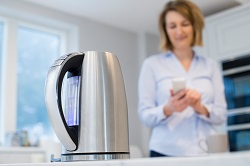Enhancing the marketability of lithium-sulphur batteries
Thanks to their high specific energy and cost-effectiveness, lithium-sulphur batteries (LSBs) are well-positioned to succeed the use of lithium-ion batteries. In fact, LSBs have been shown to offer specific energies in the order of 500 to 600 W h/kg – significantly better than the 150 to 250 W h/kg achieved by lithium-ion batteries. However, these advantages are outweighed by a number of challenges that have held LSBs back from the market. Many of these roadblocks to marketisation were addressed during the EU-funded EUROLIS project, which developed practical solutions to some of LSBs’ inherent chemical challenges. For example, the project resolved the issue of the cathode’s low electrical conductivity and the irreversible loss of active materials when dissolving lithium-sulphur into the electrolyte. The HELIS (High energy lithium sulphur cells and batteries) project picked up where EUROLIS left off. “By scaling-up the approaches developed during EUROLIS, we aimed to improve the stability of lithium anodes during cycling and address such issues as recycling and safety,” says Robert Dominko, coordinator of both the EUROLIS and HELIS projects. “In doing so, we took another big step towards developing a complete, market-ready LSB cell.”
The LSB value chain
The project’s differentiator was its use of a complete value chain for LSB production. Each of the project’s 14 partners was charged with managing a specific task along the chain, starting with the material development for three different series of prototype cells. Ultimately, a D-size prototype cell was used to test all components developed during the project. A core focus of the project was the development of separators and electrolytes which had the characteristics required by LSBs. For example, by modifying the lithium metal surface or separator, researchers were able to propose and evaluate several components that use lithium metal to protect against continuous degradation. “The best components were used for the prototype cells, which were assembled at our industrial partner’s facilities,” explains Dominko. “In total, three different generations of LSB cells were produced and tested according to the specifications of the automotive industry.” Project researchers also performed ageing and safety tests, which are essential for validating the approach. All research was supported by theoretical calculations and life cycle analysis, and cells from both projects were used to develop a recycling process for LSBs. “All of this work resulted in the creation of the right chemical environment to enable excellent reversibility and cyclability with only moderate energy density,” adds Dominko.
Safe behaviour, long cyclability
Thanks to its strong, results-driven consortia and use of a well-defined value chain, the HELIS project successfully developed LSB cells that demonstrate safe behaviour and long cyclability at moderate energy density. That being said, there remains the issue of protecting metallic lithium, which will be the focus of the next phase of the project. “During the HELIS project, our partners gained a lot of know-how and even filed several patents, putting them in a good position to push this technology to commercial use,” adds Dominko.
Keywords
HELIS, EUROLIS, lithium-sulphur batteries, LSBs, lithium-ion batteries, lithium, automotive industry







